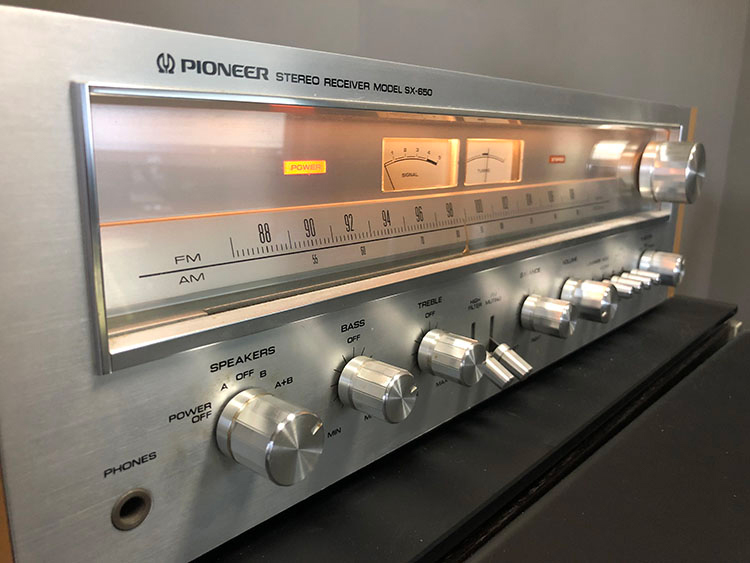It’s an amazing vintage piece that I would describe as big, heavy, and hot-running. Everything feels rock solid and the first thing it reminded me of was how a McIntosh unit feels, everything is just so well built. It’s not usual for me to acquire older gear like this, but its styling caught my eye, so I picked it up. Powering it on the first time was quite a treat, there are two backlit signal meters on the front that still work. The yellow glow is soft yet warming to enjoy while listening to music.

Tuning range:
FM, MW
Power output:
35 watts per channel into 8Ω (stereo)
Frequency response:
10Hz to 50kHz
Total harmonic distortion:
0.3%
Damping factor:
30
Input sensitivity:
7mV (mic), 2.5mV (MM), 150mV (DIN), 150mV (line)
Signal to noise ratio:
70dB (MM), 90dB (line)
Output:
150mV (line), 30mV (DIN)
Speaker load impedance:
4Ω (minimum)
Semiconductors:
1 x FET, 9 x IC, 21 x transistors, 29 x diodes
Dimensions WxHxD:
480 x 149 x 371mm / 18.9” x 5.9” x 14.6”
Weight:
13.1kg / 28.8 lb
Years made:
1976-78

Secrets Sponsor
Hooking it up to a few different speaker pairs, I noticed the sound is very cold compared to other amps I have heard. Playing with the bass and treble I was able to EQ it to just the way I like it. Not many audio products have the bass and treble knobs on the front these days. I really like being able to adjust it from the front and on the fly. Highs are clear and mids are clean, but bass seems to lack a bit of punch in my opinion. Music is detailed, but vocals can be a bit cold. I found male vocals to be good, but female vocals to be lacking with this amp. I also noted that there was almost no distortion at loud volumes. I was expecting the amp to not be in the best condition being 40 years old, but it’s still kicking just fine, try that with a modern-day Pioneer in 40 years.

A glass front panel, signal meters, and knobs that take some finger strength to turn are what makes this Pioneer feel so good to use. Save for the lighting color, this unit has a McIntosh vibe just from how it feels to use. I am not old enough to remember gear from the 70s, but it’s a nice change from modern electronics that just feel slapped together. Picking up the unit feels like you’re hitting the gym. Every switch on the front is solid and makes a nice clank like it’s controlling something important. I do miss five-way binding posts on the back, it just has basic connections that can be tricky to plug in.
Secrets Sponsor
It’s a neat little amp to have on your desk and it’s been a great conversation piece. It hasn’t really given me any issues despite being almost twice as old as I am. I really don’t like how much heat it gives off. It actually warms up my office and that’s not good when you live in Florida. These units can still be found on eBay for around $100 and it’s a great amp for show, but it’s not my go to for sound. I wonder how many more years I can get out of it before it finally gives up. If you love vintage Hi-Fi, let me know in the comments. I hope to cover more products like this in the future.



